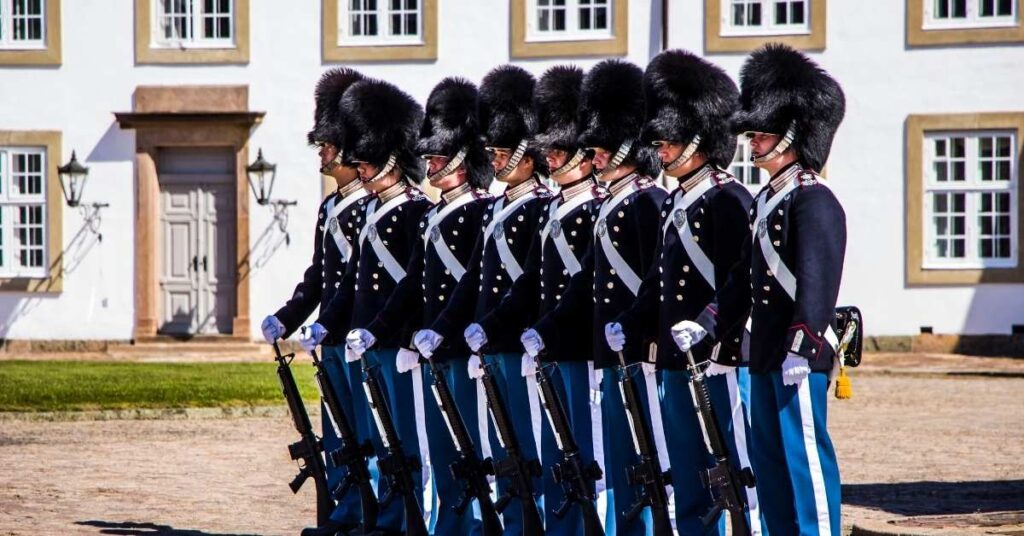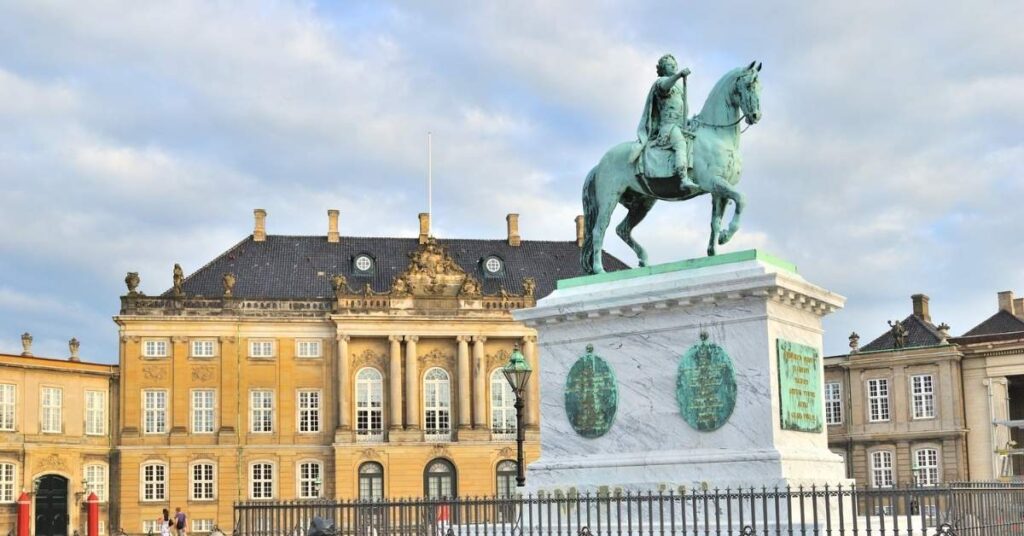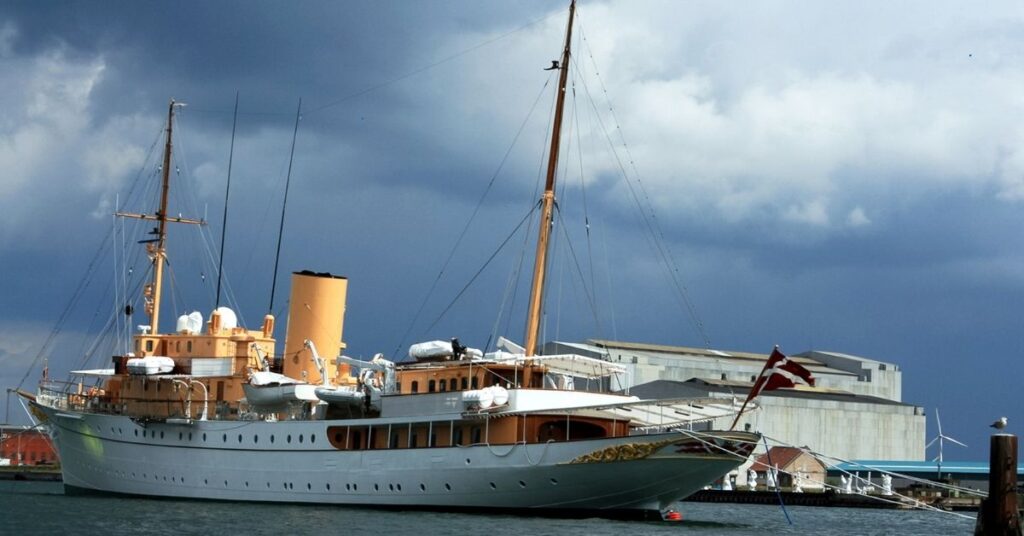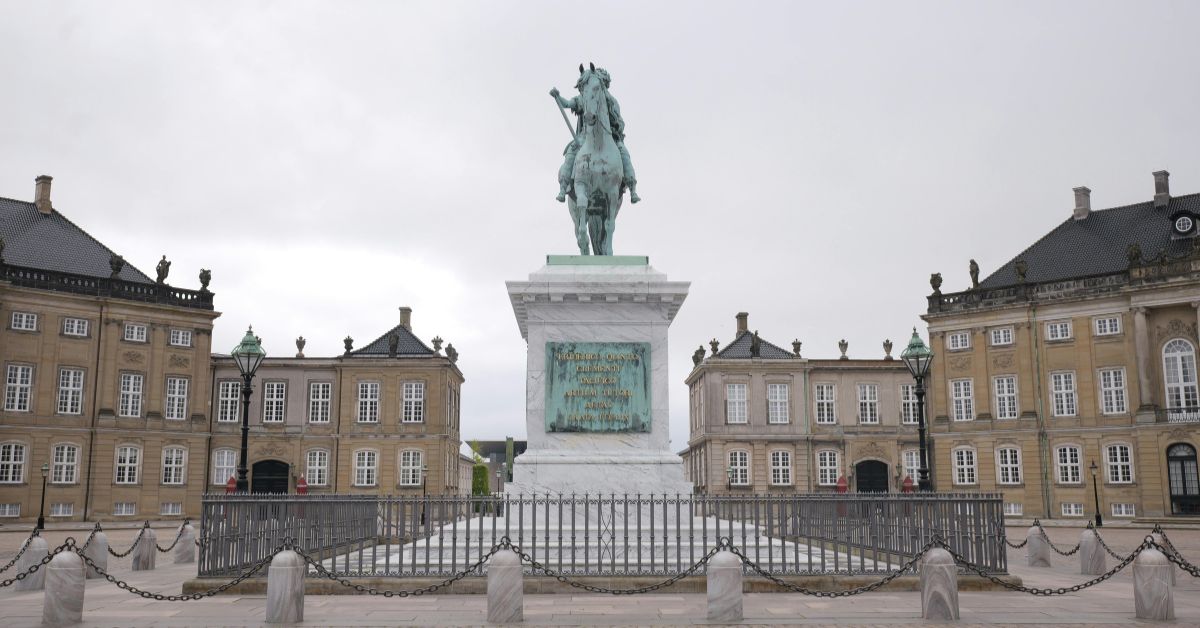The Danish monarchy is one of the oldest in the world. It all began over a thousand years ago. Kings and queens have led Denmark through history. Their stories are a very important part of Denmark’s rich heritage. Today, the Danish monarchy is a symbol of national unity and pride.
In the early days, Danish kings were powerful rulers. They made big decisions about the country. Over time, Denmark changed into a democracy. Now, the role of the monarchy is more about tradition and less about politics.
King Frederik X is the current monarch. He represents Denmark at home and abroad. He does not make laws or run the government. Instead, his role is mostly ceremonial. This means he attends important events and supports Danish culture.
The monarchy is an essential part of understanding Danish culture. It’s visible in many traditions and holidays. For example, the mornach’s New Year’s Eve speech is a major event. In most homes it is mandatory to watch it. It’s a time when the monarch shares his or her thoughts with the nation on live television.
The royal family also plays a role in international relations. They help promote Denmark globally. This includes cultural and business relations. This can impact the work and social environment for expats in Denmark.
Danish palaces and royal events are also big tourist attractions. They offer a glimpse into the country’s history and royal life. Visiting these sites is an experience that helps in connecting with Danish history and traditions.
The Danish monarchy has evolved over centuries. But it remains a cherished institution. It represents continuity and national identity. Understanding the monarchy is key to understanding Danish society.
The Royal Family: Past and Present
Let’s explore the royal family’s past and present. This journey is not just about kings and queens. It’s about the people who shaped Denmark’s history and culture. This is especially fascinating for expats, offering a deeper understanding of their new home.
Historically, the Danish royal family has seen many influential figures. King Christian IV, ruling in the 17th century, is one such figure. He transformed Copenhagen and is remembered for his architectural legacy – for example Børsen and Rundetaarn. Then there’s King Frederick II, known for his patronage of the arts. His contributions enriched Danish culture.
These historical figures highlight the monarchy’s role in Denmark’s development. They influenced everything from architecture to political reforms. Understanding this helps expats connect with Danish heritage.
Moving to the present, King Frederik X symbolizes the continuity of the monarchy. He ascended the throne in 2024 and is admired for his dedication to Denmark. His reign is already a blend of tradition and modernity. He reflects the enduring relevance of the monarchy in today’s Denmark.
The king’s role is largely ceremonial but deeply significant. He represents Denmark at official events and supports various cultural activities. Seeing the king engage in these traditions can be a unique cultural experience.
King Frederik, and his family represent the present but indeed also the future of the monarchy. Along with Queen Mary, they bring a contemporary touch to royal duties. Their involvement in social and environmental causes resonates with people.
The Danish royal family today is not just about ceremonial roles. They play a part in promoting Danish culture and values worldwide. This global outreach is important for Denmark’s international image. It also shows the country’s commitment to global issues.
The Danish Monarchy’s Cultural Impact
This influence of the Danish monarchy spans arts, architecture, and traditions. Understanding this is vital for expats to truly appreciate their life in Denmark.
The Danish monarchy has been a patron of the arts for centuries. Kings and queens have commissioned artworks, fostering a rich artistic tradition. This has left a legacy of stunning art that is part of Denmark’s cultural identity. Exploring this art offers a window into the nation’s soul.
In architecture, the impact is equally profound. Royal palaces like Amalienborg and Frederiksborg are architectural marvels. They showcase the grandeur and style of different eras. These buildings are not just royal residences. They are symbols of Danish history and aesthetics. Visiting these sites is like walking through history.
Traditions are another area where the monarchy’s impact is clear. Ceremonies like the changing of the guard at Amalienborg connect the past with the present. These traditions are a living part of Danish culture. They offer expats a glimpse into the continuity and change within Danish society.
The role of the royal family in promoting Danish culture globally is significant. Through state visits and diplomatic engagements, they showcase Denmark’s heritage. This global presence helps put Danish culture on the world stage.
King Frederik and Queen Mary play essential roles in this cultural diplomacy. They actively participate in cultural events and promote Danish arts and values. Their involvement helps bridge cultural gaps and fosters international understanding.
The Danish Royal Guard

The Danish Royal Guard are also having severe culutural impact. With their iconic bearskin hats and ceremonial presence, symbolize national pride and continuity. As well they are representing Denmark’s rich monarchical traditions. Their cultural influence extends to Danish identity and tourism. Visitors can experience Denmark’s heritage and loyalty to the crown.
The Danish Royal Guard protects the monarchy, providing security for royal residences, including Amalienborg Palace and Fredensborg Palace, as well as during royal events. It also performs ceremonial duties, such as the daily changing of the guard in Copenhagen. In addition to its ceremonial role, the Guard is a fully operational infantry regiment within the Danish Army. They can also be deployed on international missions.
Ceremonies and Traditions of the Danish Monarchy
The ceremonies and traditions play a vital role in Danish society. They are not just rituals. They are threads connecting the past to the present. Understanding these ceremonies is a good idea for expats to feel more connected to Danish life.
Firstly, One of the most significant ceremonies is the New Year’s Eve hosted by the King. It’s a grand event, steeped in tradition. Members of the government, officials, and notable figures are invited. They greet the King and exchange New Year’s wishes. This event is a symbol of unity and continuity in Denmark.
Another important tradition is the changing of the guard at Amalienborg Palace. It happens daily and is a spectacle of precision and discipline. This ceremony reflects the monarchy’s historical military role. Watching this ceremony is a chance to witness a living piece of Danish history.
The celebration of the monarch’s birhtday is another big tradition. People fro near and far travel to see the royal family on the palace balcony. This event highlights the close relationship between the monarchy and the people. It’s a day of national pride and joy.
Also, royal christenings, weddings, and anniversaries are also significant. They are grand celebrations, covered extensively in the media. These events give a glimpse into the royal family’s life. They also show the monarchy’s role in preserving and continuing Danish traditions.
The significance of these traditions in contemporary Danish society cannot be overstated. They are more than just formalities. They are moments that unite people, regardless of background.
These traditions also maintain a sense of national identity. They remind people of their shared history and values. In a rapidly changing world, these ceremonies offer a sense of stability and continuity.
Palaces and Estates: Architectural Marvels

The palaces and estates are not just homes for royalty. They are symbols of Denmark’s history and architectural prowess. When you experience these palaces it is easier to appreciate Danish culture and history.
Amalienborg is perhaps the most famous royal residence. It’s the winter home of the Danish royal family. The palace consists of four identical buildings, showcasing classic Danish architecture. It’s famous for its beautiful square and the daily changing of the guard. This event is a must-see for expats, offering a glimpse into royal traditions.
Then there’s Rosenborg Castle, known for its stunning Renaissance architecture. It was built by King Christian IV in the 17th century. Today, it houses the Danish Crown Jewels and other royal treasures. Its gardens, the King’s Garden, are the oldest royal gardens in Denmark. They are a perfect spot to relax and soak in the history.
These palaces hold immense historical significance. They’ve witnessed centuries of Danish history. From royal births to significant political events, these walls have seen it all. They are living museums, telling the story of Denmark’s past.
Architecturally, these palaces showcase Denmark’s evolution in design and style. From Baroque to Renaissance, each palace reflects a different era. They are a testament to the skills of Danish architects and artisans. For expats interested in architecture, these palaces offer an insightful journey through time.
Moreover, these estates are not just tourist attractions. They play an active role in Danish society. They host official events and ceremonies, linking the past with the present. This ongoing use demonstrates the living nature of Danish history.
The Danish Monarchy and Danish Politics
Continuing our journey through the Danish Monarchy, let’s explore its role in Danish politics. While the monarchy is a cherished institution, it has a specific constitutional role in the Danish political system. Understanding this role is crucial to grasp the dynamics of governance in Denmark.
In the Danish political system, the monarchy is constitutional, meaning it has a symbolic and ceremonial role rather than a governing one. The monarch, currently King Frederik X, does not make laws or decisions. Instead, he participates in state ceremonies and represents Denmark on the international stage.
One of the most important ways the monarchy interacts with the government is through the formal opening of the Danish Parliament, known as the Folketing. The king delivers the King’s Speech, outlining the government’s agenda for the upcoming parliamentary session. This event marks the beginning of Denmark’s political year.
While the King’s Speech sets the tone for government priorities, the actual governance and decision-making lie with elected officials. Denmark is a parliamentary democracy, and political power is vested in the elected members of the Folketing and the Prime Minister.
The monarchy’s role in diplomacy is another important aspect. The royal family participates in state visits and diplomatic engagements with foreign leaders. They play a role in promoting Danish interests and enhancing international relations. This global presence can be of interest to expats, as it reflects Denmark’s global outlook and commitment to diplomacy.
The monarchy’s interaction with politics is a fine balance between tradition and modern governance. For expats, it’s an opportunity to witness how Denmark’s history and contemporary political system intertwine. While the monarchy’s political role is limited, its cultural and symbolic significance remains profound.
Public Perception and the Role of the Media

How the monarchy is portrayed in the media and perceived by the public is a fascinating aspect of Danish culture, and it holds relevance for expats living in Denmark.
The Danish monarchy enjoys a unique position in the media. It is covered extensively, and royal events and activities are a regular feature in newspapers and on television. The media often portrays the royal family in a positive light, highlighting their roles in cultural and charitable endeavors.
Public opinion regarding the monarchy in Denmark is generally favorable. The royal family is well-liked and seen as an essential part of Danish identity. Polls consistently show strong support for the monarchy. Danish citizens appreciate the royal family’s contributions to the nation, including their involvement in cultural and humanitarian causes.
The media plays a significant role in shaping public perception of the monarchy. Positive media coverage reinforces the monarchy’s popularity. The Danish public values the royal family’s presence at national events and celebrations. Witnessing this public sentiment can be an insightful aspect of Danish culture.
The media also contributes to transparency in the monarchy’s activities. It keeps the public informed about the royal family’s engagements, both at home and abroad. This openness fosters a sense of connection between the royal family and the Danish people.
The Danish royal family actively engages with the media and the public. They grant interviews and participate in events that are covered by journalists. This accessibility enhances the monarchy’s relationship with the Danish public and ensures that they remain relevant in contemporary society.
For expats living in Denmark, observing this dynamic between the monarchy, media, and the public provides a window into Danish society. It showcases how an institution rooted in tradition can adapt to modern media and maintain a strong connection with the people.
The Future of the Danish Monarchy
Let’s turn our attention to the future of this cherished institution. The Danish monarchy faces questions about succession and its role in modern Denmark. These topics are of interest to expats as they impact the country’s political and cultural landscape.
Succession is a crucial aspect of the Danish monarchy. Currently, King Frederik X reigns, succeeding Queen Margrethe II. The heir to the king is his children in the line of succession. Understanding the process of succession offers insights into the monarchy’s continuity.
Public and political debates surrounding the monarchy’s role in modern Denmark are not uncommon. Some argue for a more symbolic role, while others advocate for maintaining the status quo. These debates reflect Denmark’s commitment to democratic discourse and its willingness to adapt to changing times.
One key point of discussion is the monarchy’s cost to the state. Critics question the use of public funds to support the royal family. This debate touches on financial transparency and accountability in Denmark’s governance. Expats may find these discussions enlightening, as they highlight the country’s democratic values.
Another aspect of the monarchy’s future is its engagement with contemporary issues. The royal family actively participates in discussions related to social and environmental causes. This involvement aligns with modern values and resonates with a younger generation of Danes.
The Danish monarchy’s future is not just about the institution itself; it’s about how it adapts to the evolving needs and values of Danish society. The monarchy’s ability to stay relevant while preserving its cultural heritage is a testament to Denmark’s ability to balance tradition and progress.


